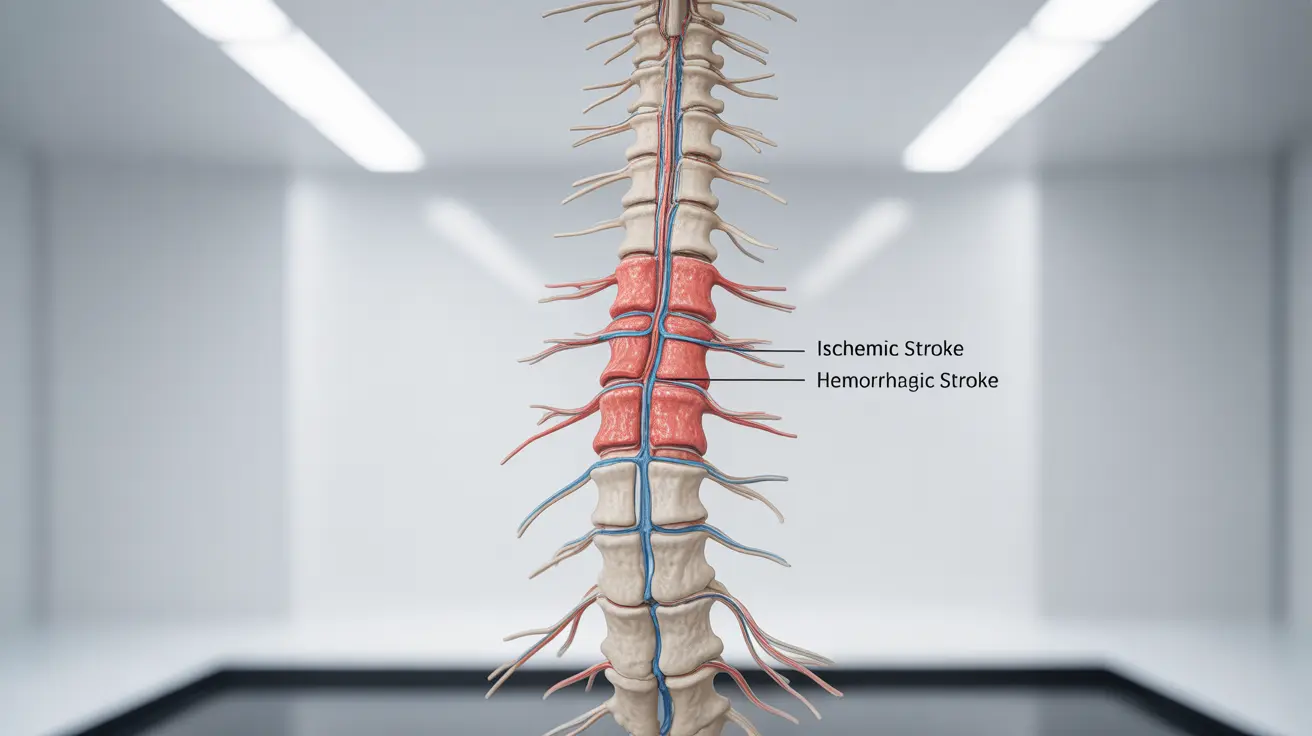A spinal stroke, though less common than a brain stroke, is a serious medical condition that requires immediate attention and understanding. This condition occurs when blood flow to the spinal cord is disrupted, either through a blockage or bleeding, potentially leading to severe complications and long-term health impacts.
Recognizing the causes and symptoms of a spinal stroke is crucial for early intervention and optimal treatment outcomes. This comprehensive guide explores the essential aspects of spinal strokes, including their various causes, diagnostic approaches, and available treatment options.
Types of Spinal Strokes
Spinal strokes typically fall into two main categories, each with distinct causes and characteristics:
Ischemic Spinal Strokes
These occur when blood flow to the spinal cord is blocked, typically due to blood clots or arterial diseases. Ischemic strokes represent the majority of spinal stroke cases, accounting for approximately 80% of incidents.
Hemorrhagic Spinal Strokes
These result from bleeding within or around the spinal cord, often due to ruptured blood vessels or trauma. While less common, hemorrhagic strokes can cause rapid and severe symptoms.
Primary Causes and Risk Factors
Understanding the spinal stroke causes is essential for both prevention and treatment:
- Atherosclerosis (hardening of arteries)
- Blood clotting disorders
- Fibrocartilaginous embolism
- Arterial dissection
- Spinal cord compression
- Surgical complications
- Vascular malformations
Diagnostic Procedures
Accurate diagnosis of a spinal stroke requires several medical procedures:
- MRI scans with contrast
- CT scans
- Spinal angiography
- Blood tests
- Neurological examinations
Treatment Approaches
Treatment for spinal strokes focuses on both immediate intervention and long-term recovery:
Immediate Interventions
Emergency treatments may include:
- Anticoagulation therapy
- Blood pressure management
- Surgical intervention when necessary
- Specialized medication administration
Rehabilitation Strategies
Long-term recovery often involves:
- Physical therapy
- Occupational therapy
- Speech therapy (if needed)
- Psychological support
- Adaptive equipment training
Prevention and Risk Reduction
Several lifestyle modifications can help reduce the risk of spinal strokes:
- Regular blood pressure monitoring
- Maintaining healthy cholesterol levels
- Regular exercise
- Smoking cessation
- Healthy diet
- Stress management
- Regular medical check-ups
Frequently Asked Questions
What are the most common causes of a spinal stroke?
The most common causes include atherosclerosis, blood clots, arterial dissection, and fibrocartilaginous embolism. Risk factors such as high blood pressure, diabetes, and smoking can significantly increase the likelihood of experiencing a spinal stroke.
How is a spinal stroke typically diagnosed and treated?
Diagnosis typically involves MRI scans, CT imaging, and neurological examinations. Treatment depends on the type of stroke but may include anticoagulation therapy, blood pressure management, and comprehensive rehabilitation programs.
Can certain lifestyle changes reduce the risk of having a spinal stroke?
Yes, several lifestyle modifications can help reduce risk, including maintaining healthy blood pressure levels, regular exercise, proper diet, smoking cessation, and managing underlying health conditions like diabetes and heart disease.
What are the typical symptoms of an ischemic versus a hemorrhagic spinal stroke?
Ischemic spinal strokes often present with gradual symptom onset, including muscle weakness, numbness, and coordination problems. Hemorrhagic spinal strokes typically cause sudden, severe back pain, followed by rapid neurological deterioration and potential paralysis.
Are there any specific long-term health complications associated with surviving a spinal stroke?
Long-term complications may include partial or complete paralysis, chronic pain, bladder and bowel dysfunction, sexual dysfunction, and mobility issues. The severity depends on the stroke's location and extent, as well as the timeliness of treatment.




